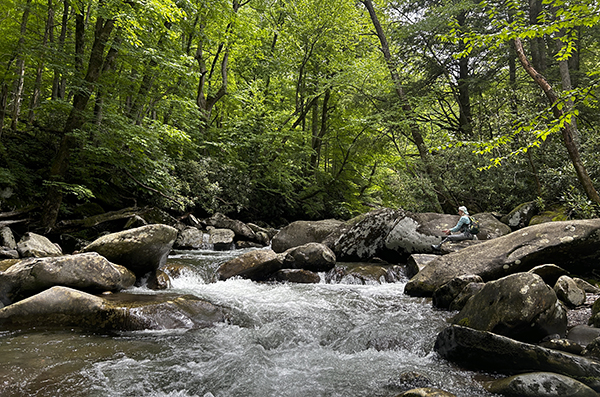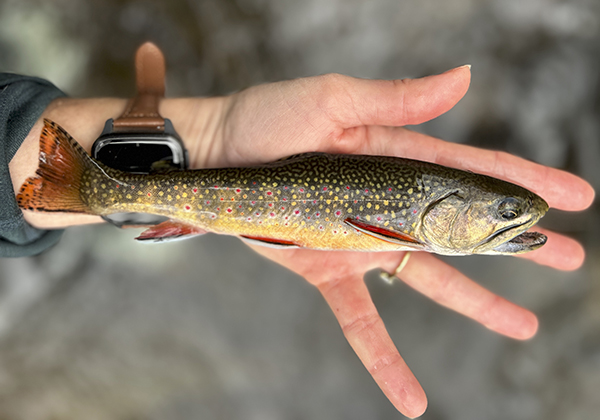It’s been a pretty wet May here in the Smoky Mountains. We’ve been dodging the weather and choosing streams based on water levels. Fortunately we haven’t had any long term flooding, only typical high water that corrects to normal in a day or two. We shuffled a few guide days around but managed to get everything to work out.
Dry fly fishing has been pretty good lately, but it’s May. If we don’t have some dry fly fishing to talk about, something would be VERY wrong. Even so, we’re relying on nymphs a good bit as well. That’s primarily because of strong stream flows. Cooler mornings and mild days have kept water temperatures low enough to probably keep the fish on bottom a little more than typical.
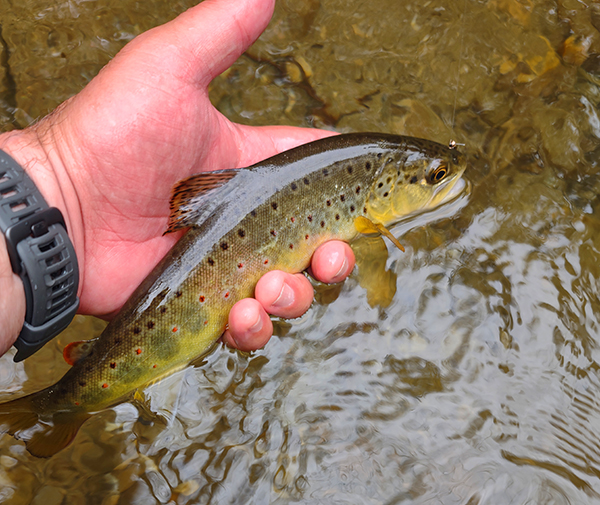
Beadhead nymphs have been a steady part of what we’re fishing. Most of the time the nymphs are part of a dry/dropper rig so dry flies are still part of the equation.
We’re still wearing waders, but that’s likely to change any day. Overnight temperatures have finally moderated and we’re finally past the point of seeing frost on the mountain tops. Expect to see water temperatures in the low 60’s across the Smokies. This makes for great wet wading when paired with a warm, sunny day.
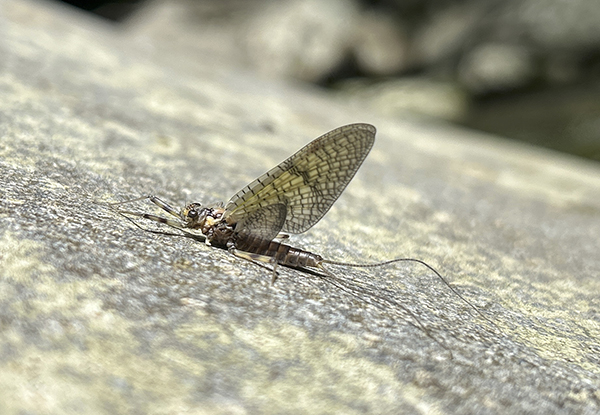
We’ve had some good bug activity this spring. Hatches will wane as we move into summer but dry fly fishing will become more constant in spite of that.
Most generic fly patterns will be agreeable to the trout in the Smokies. Parachute Adams and Stimulators are our favorite dry flies (no surprise to those who have fished with us before). Virtually any beadhead nymph in the #14-16 size range will find willing fish. We know some folks really believe in the extra heavy, tungsten weighted nymphs but those really aren’t necessary. Trout here in the Smokies are quite willing to move for a fly and it’s pretty likely that the turbulent waters here keep tumbling nymphs suspended as they flow with the current.
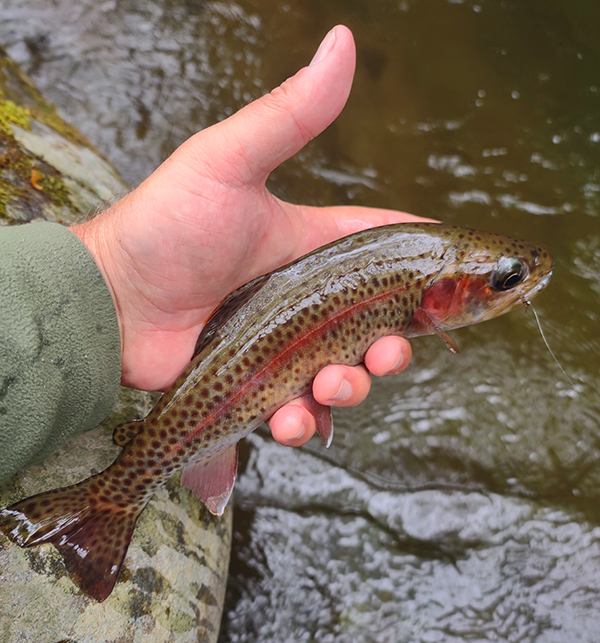
No need to use excessive weight on nymphs in the Smokies. Considering how well the fish rise to dry flies a nymph does not need to be dragging bottom this time of year.
It’s still very early, but long range forecasts are predicting we’ll have a normal to wet summer so hopefully we won’t have any issues with flows or water temperatures this year. Last year we had excellent conditions but suffered a “flash drought” in the fall when it was uncharacteristically dry for a couple of months. Fortunately that happened after the weather cooled down so there were no excessively warm temperatures to harm the trout. Fishing was very tough last fall, but from what we’ve seen this spring the populations didn’t suffer at all.
